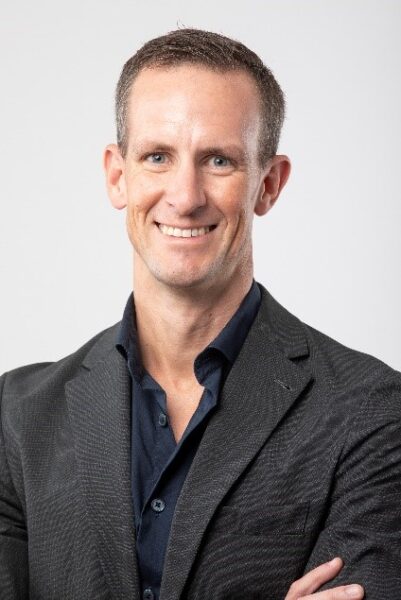The South African Schools Collection
Educating Children Who Need Added Support
Others, however, prefer to stay in mainstream schools, while some are temporarily home-schooled.
Last year’s Parliamentary portfolio committee meeting didn’t leave much to the imagination in terms of education catering to children with disabilities and learning barriers.
During this gathering, the Department of Basic Education revealed that about 11 400 physically and mentally disabled learners were waiting for placements in one of the country’s 450 special needs and 750 full-service schools. Full-service schools are mainstream facilities equipped to accommodate learners with a variety of physical, mental and emotional learning barriers.
“Full-service schools recognise the entire spectrum, from emotional problems and family background, through to mental and physical disabilities – and a million things falling in-between, including barriers to reading and maths,” explains health economist Nicola Deghaye, who is doing her PhD on the accessibility and availability of special needs education in South Africa’s public mainstream sector.
One of her preliminary findings is that the quality of learning barrier education varies from province to province. One province that stands out is the Free State, Deghaye says.
“You’d expect Gauteng and the Western Cape to be ahead. While the Western Cape is up there, I have been very impressed by meetings I’ve had with some Free State schools. I am early in my research, so it’s not a conclusive finding, but the Free State might be ahead of the rest,” she says.
Besides her background in health economics, Deghaye’s research links back to her first-hand experience with special needs education: her 11-year-old son, Daniel, has cerebral palsy and is wheelchair-bound. Last year, she took him out of a private school because the facility didn’t meet his specific requirements. While he is currently home-schooled, his able-bodied sister goes to a government school.
“My son needs to move every day. In the school where he was, they didn’t keep him moving. His teachers didn’t have the time to move him in and out of his chair. As a result, he got terribly stiff,” she says.
Home-schooling has worked for Daniel from an academic and practical perspective.
“It is the most flexible option. Now my son can finish early to go to physiotherapy or horse riding. His energy levels are so much higher because we can fit movement into his routine.”
Despite being a good interim solution, home-schooling is not something she wants to do long-term.
“I want to get my son into a mainstream full-service high school with a facilitator to help him during the day,” she says.
Bridging the gap
Besides enrolling children in mainstream and full-service schools, parents can opt for assisted learning schools like The Bridge in Lonehill, Sandton. The facility caters for Grade 0 to Grade 7 children diagnosed with various learning barriers, from attention deficit hyperactivity disorder (ADHD) and high anxiety, to mild autism, poor auditory processing, dyslexia, speech impediments and other challenges.
The difference between assisted learning schools and remedial schools is that the former doesn’t offer a vocational stream.
“Assisted learning does offer Individual Education Programmes (IEP) where necessary, but it is not the norm, as it is in remedial schools,” explains principal Retha van Niekerk.
Simply put, an IEP is a kind of map that lays out the programme of special education instruction, support and services an individual child needs to make progress and succeed in school.
“Our aim is to address the barriers to learning, to get the pupil ready for mainstream education after two years of enrolment if the parent so wishes. The environment is inclusive as far as facilities allow for it and the pupil will benefit from what we offer,” says Van Niekerk.
Classes at The Bridge are capped at 12 pupils a class, she continues, and while the school doesn’t have a facilitator facility, it deploys well-qualified post-graduate students who rotate between grades during the day to assist teachers.
“In an assisted learning environment, the CAPS and ISASA curriculum are followed, but we work at a slower pace and lower volume, with lots of practical examples. Different teaching approaches are followed to address the sensory aspect of the pupils,” she says.
Despite the benefits of an assisted learning school, many children end up in a mainstream or full-service school.
“Many parents choose to send their special needs child to the same school as their other children, which tends to be closer,” says Deghaye. “For some kids, this means travelling one and a half hours one way. Just because there is a full-service school in every district, doesn’t mean you live near one.”
One mainstream public primary and high school that caters for children with learning barriers, from autism and Down syndrome to ADHD and physical disabilities, is Sun Valley in Noordhoek, Cape Town.
“We have an interventions programme, which is for any child who has barriers to learning. We also have different ways of teaching these kids,” says deputy principal Bradley Keller. “Our three small group teachers come into the classroom and help those children who need extra attention during their lessons and guide them during their tasks without removing them from the classroom.”
For more severe cases, Sun Valley has 45 facilitators who each sit with one child the entire day, helping them with their tasks on a one-on-one basis. This is paying off, says Keller.
“It is incredible to see how a boy with Down syndrome who started Grade 1 five years ago, with everyone thinking he wouldn’t go anywhere, can read, hold a conversation and play a bit of rugby,” he says.
There is a very specific reason why Sun Valley chose the inclusive route, says Keller. “We believe that education is about taking in any child and helping them realise their full potential.”
Special needs kids in a mainstream school Enrolling your child with learning barriers in a mainstream school is doable.
1. Connect your child’s teachers to his/her specialists, Deghaye suggests: “If your child is seeing an occupational therapist or psychologist, update the teachers as to what those professionals are doing. Organising a meeting between yourself, the teacher and the specialist is valuable, as this allows them to come up with clever solutions in the classroom.”
2. Use the mechanisms any school has in place to accommodate your special needs child, adds Deghaye. “There should be a school-based support team. Make sure that your child is on this team’s agenda. Even in ordinary schools, you can insist on individual education support plan. You have that right as a parent: it is stipulated in South Africa’s inclusive education policy.”
3. If you are contemplating sending your child to a special needs school, don’t wait too long to make that decision, says Van Niekerk: “The sooner the intervention, the better, and the quicker the results. Make an appointment with the school and be transparent about the entire history and family background. This is a team effort.”
4. The biggest fear among parents when sending their special needs children to a mainstream school is that they’ll stand out. This doesn’t have to be the case, says Keller. “Last year we had a boy with muscular dystrophy going on to our high school. He is in a wheelchair and has a guide dog. His classmates had grown up with him since Grade R, so he was not different to them at all.”






 Sign-up and receive the Business Media MAGS newsletter OR SA Mining newsletter straight to your inbox.
Sign-up and receive the Business Media MAGS newsletter OR SA Mining newsletter straight to your inbox.